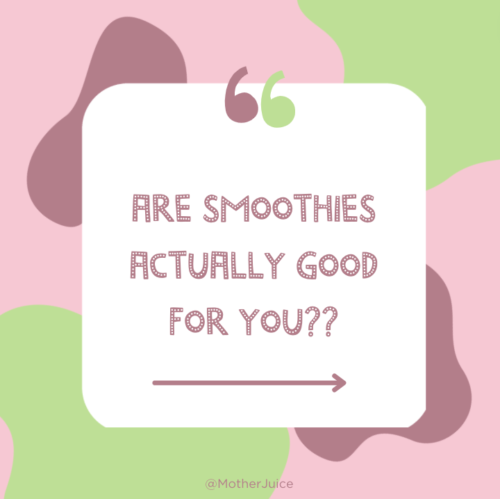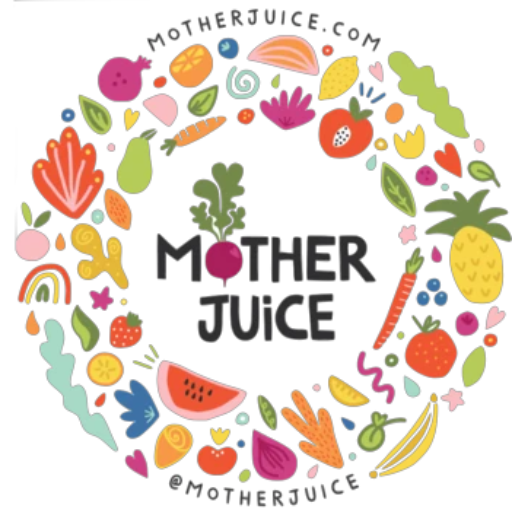
Smoothies: Friend or Frenemy?
The Great Smoothie Debate
Smoothies. You drink ‘em, pack ‘em with veggies, make ‘em taste like milkshakes, you can even turn them into the most aesthetically-pleasing bowl that looks like a literal art installation (hellooo, Mother Juice acai bowl). And even though they’re a chilly meal, they’re also a hot topic that’s up for debate. The debate in question? Are smoothies actually “good” for you if they contain sugar?
The Sugars In Question
First, we’ve gotta know what we’re working with. Not all sugar is the same, especially when fruit is involved. This is going to require a little bit of science, but don’t worry, we got this. *slaps on lab goggles* The kind of sugars that we’re usually being warned about are refined sugars – the ones that are processed and make most candies taste oh, so delicious. “Refining” sugar is the process of stripping away the natural “packaging” (a whole food like sugar cane or beets) so really all that’s left is well, THE SUGAR! Doesn’t sound so bad right? Wrong!
The sugars found in fruit on the other hand are simple sugars – also known as fructose. This type of sugar is preferable because it still resides in its original packaging. When we eat a whole fruit like mango or banana, our body has to put some work in to break down the fiber around the sugar and digest the fruit. This work our body is doing slows down the speed at which the sugar hits our bloodstream and helps us avoid spikes in sugar and post-sugar crashes. Our body needs a certain amount of simple sugars to function properly, and we’ve been consuming these types of sugars since we literally came to planet Earth. They give us energy, aid in recovery from exercise, and like, they’re really yummy. And that doesn’t have to be a crime!! Especially not when balance is at play…
Balance
We all know the negative implication of the quote, “too much of a good thing,” (I’m looking at you, coffee #4). And of course, the same stands for fruits and fruit sugars. But does this mean we should avoid fruits at all costs? What’s up with all the conflicting info on the nutrition graphics all over Instagram??
The answer that we’ve found to be the key is BALANCE. A smoothie is considered balanced when it contains the “Fab Four,” (Fat, Fiber, Protein, & Greens). TY to Kelly Leveque aka @bewellbykelly for coining this phrase and making it the MOST easy to remember. Think of healthy fats and protein as the “mom friends” who call the Uber home for simple sugars at the end of a wild night. When healthy fat and protein are involved, they aid in the slow absorption of the simple sugars. This is key for avoiding that spike and crash cycle we get after consuming something sugary. Greens are our besties when it comes to getting in some extra iron, magnesium, potassium, and calcium. And last but absolutely not least, fiber is key because it helps to control our blood sugar levels…aka what this entire article is about!
The Makeup of a Balanced MoJu Smoothie
Here are some balanced add-ins we put in our smoothies:
Healthy Fats:
- House-made almond butter with coconut oil
- Flax seeds
- Chia seeds
- Avocado
Proteins:
- Protein powder
- Hemp seeds
- Flax & chia seeds
Greens:
- Kale
- Spinach
- Spirulina
…& more!!
In Conclusion
This can all be wrapped up in one little sentence: Balance is Key. To label or demonize any food as “bad” or “the enemy” can only create more problems for us in the long run. Ultimately, you know what feels good for your body. Focusing on feeling good might look like a smoothie packed with kale and healthy fats and fibers most days, and not feeling guilty if one day you reach for a smoothie that health “gurus” might write angry blog posts about.
Resources:
https://www.byrdie.com/are-smoothies-healthy-4843189
https://www.integrativenutrition.com/blog/2019/07/creating-a-nutritious-smoothie






